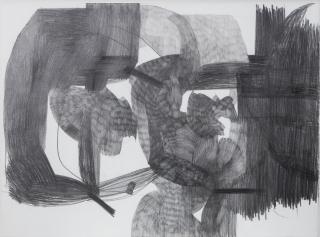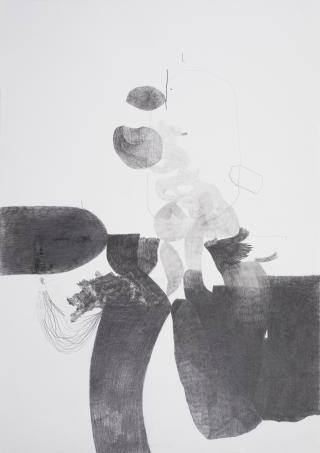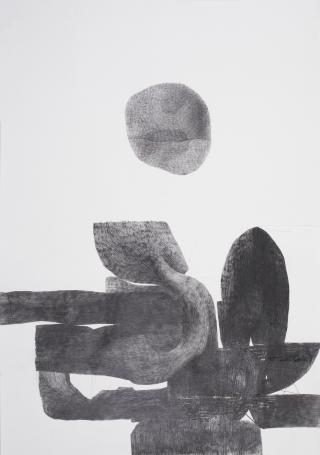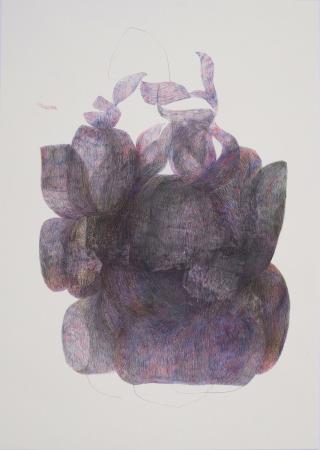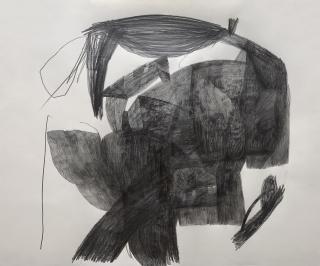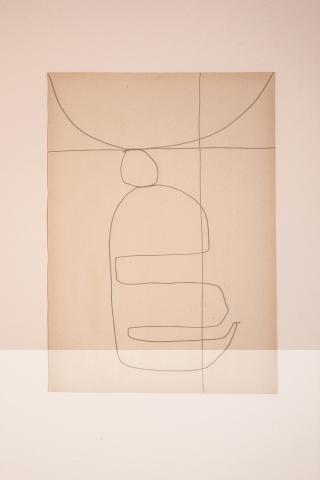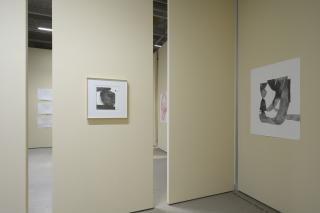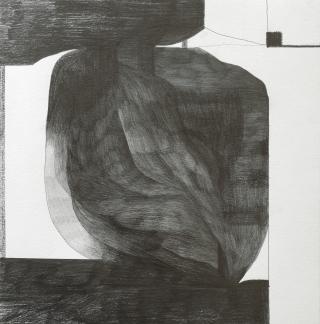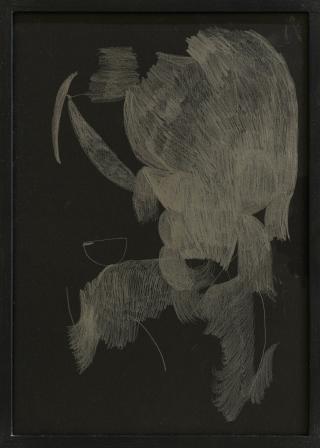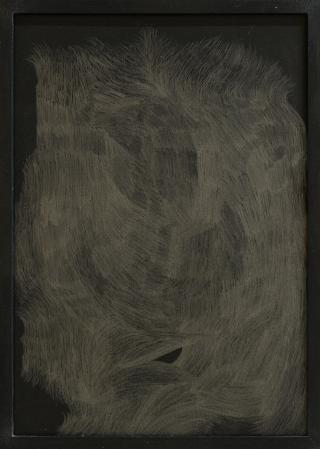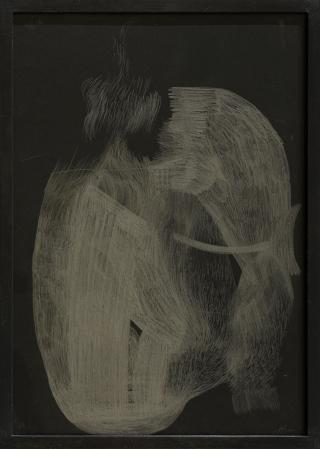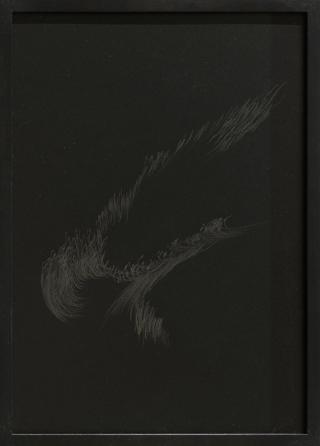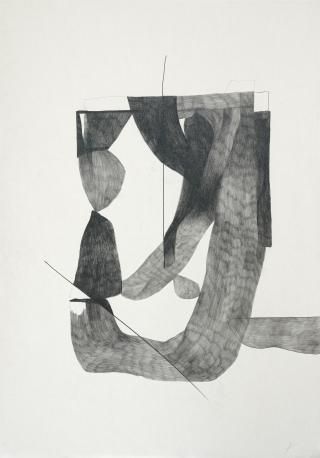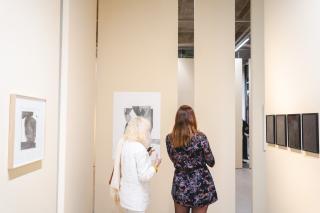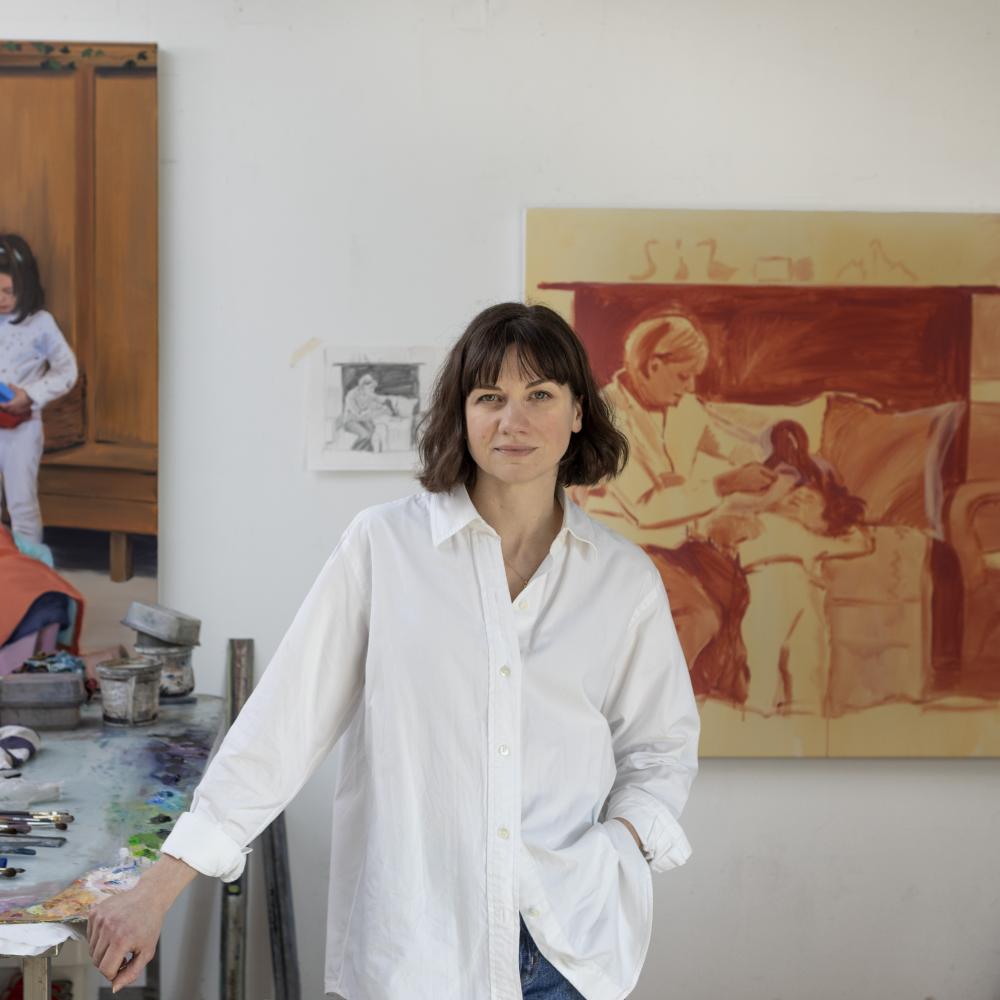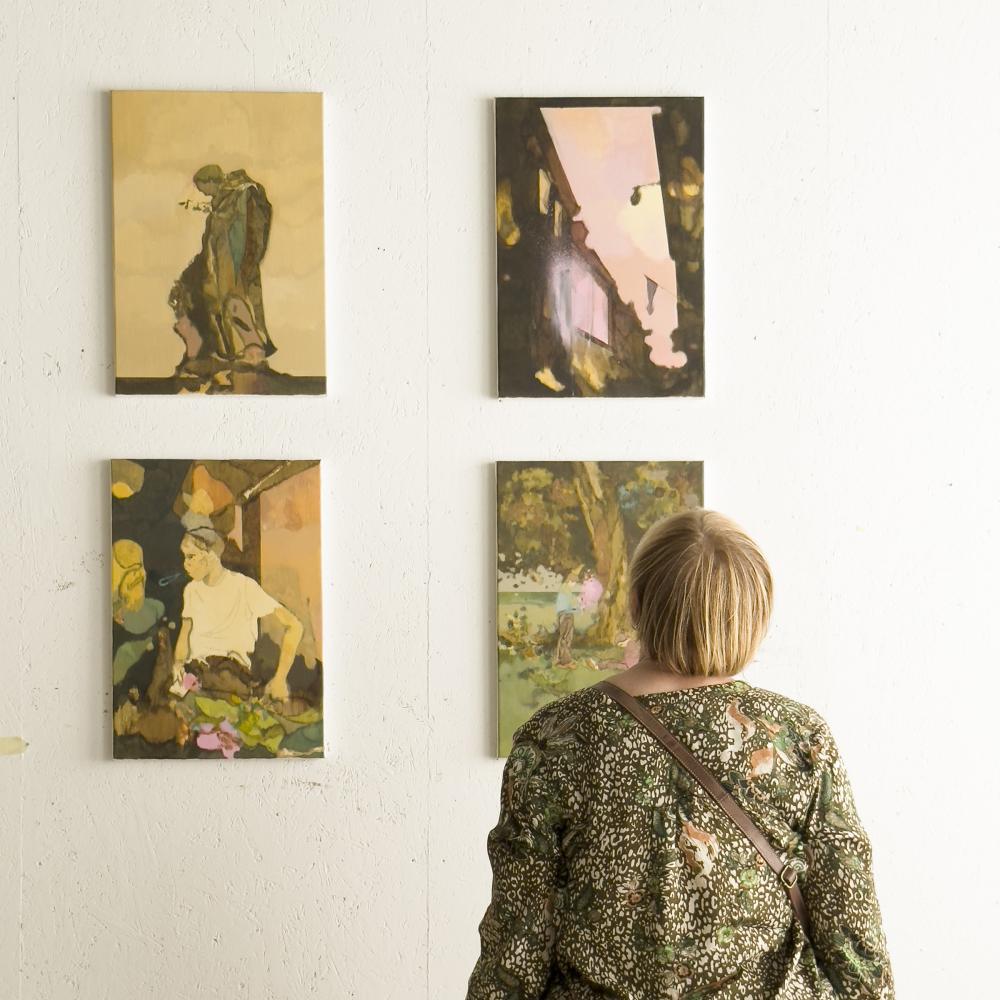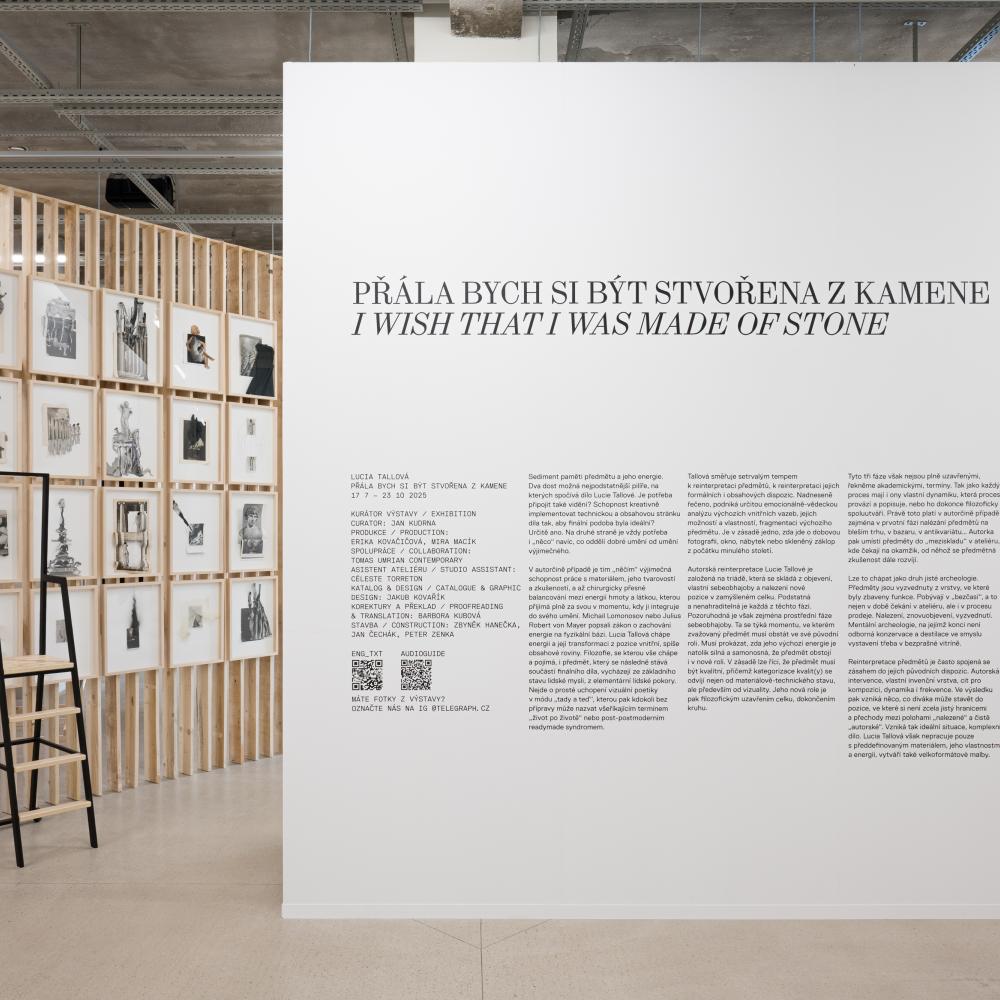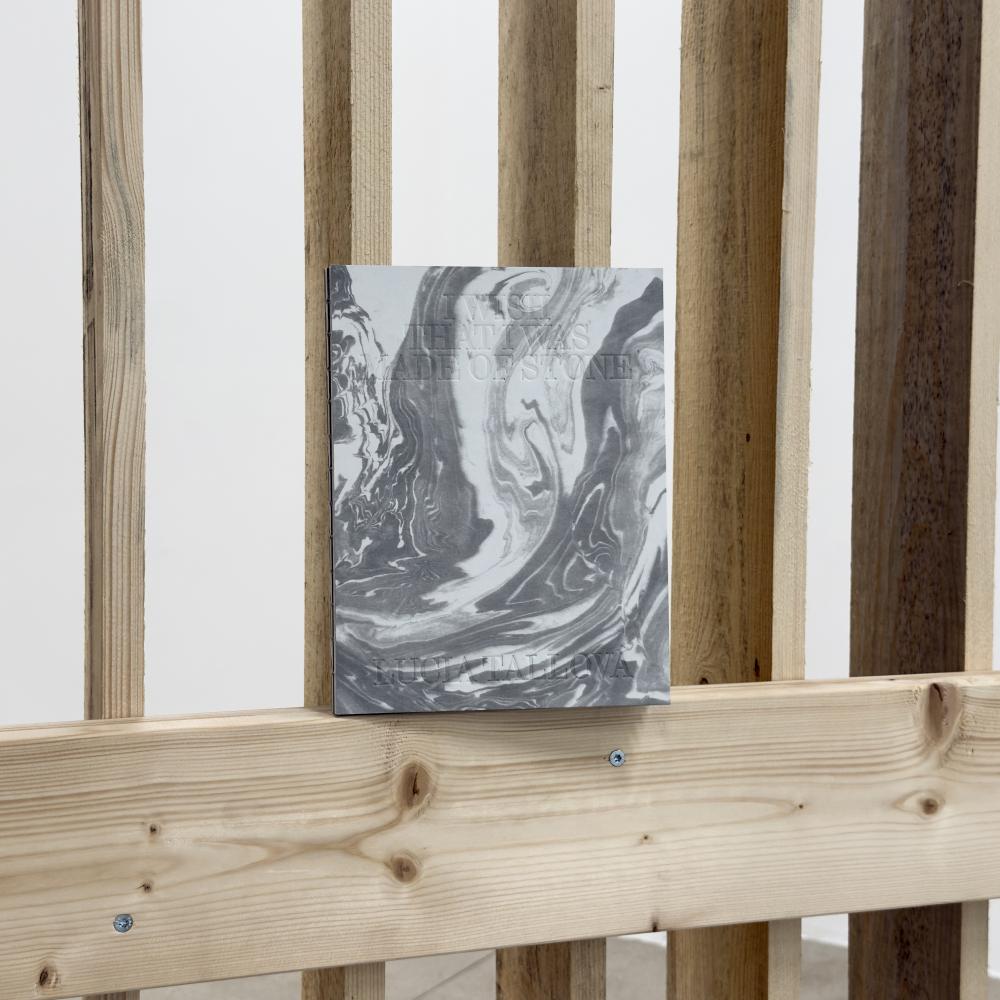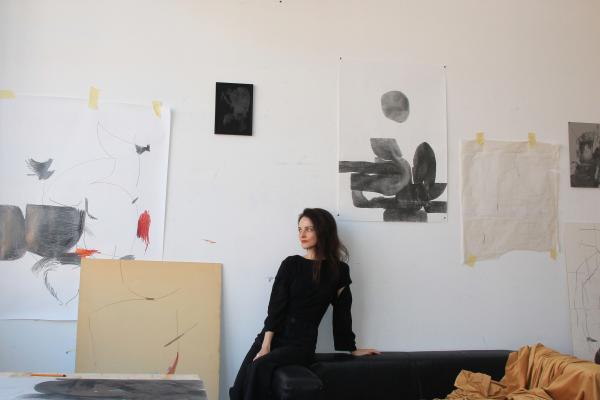
Taja Spasskova (*1990, Belarus) is a multidisciplinary artist and a graduate of the MA in Illustration and Graphic Design at the Faculty of Design and Art Ladislav Sutnar in Pilsen. She specializes in abstraction and works mainly with drawing and photography. He pushes the boundaries of these media and explores their potential to transform into unconventional and experimental forms. Her creative process is deeply intuitive and spontaneous. To capture her emotional inner world, she avoids sketches and pre-planned compositions. In her work, she constructs abstract forms reminiscent of two-dimensional sculptures. The central themes of her work are reality, consciousness and identity. Spasskova explores the layered constructions of reality and seeks connections and parallels between the individual and the universe. Her work straddles the boundaries of self-knowledge, emotion and the philosophical underpinnings of existence, aiming to uncover the threads that connect personal and universal principles. Spasskova has presented her work in the collective exhibition Connections at Telegraph Gallery, NoD Gallery, Kampus Hybernska Gallery, Pilsen City Gallery and abroad at CRAG Gallery in Turin, Leerer Beutel Gallery in Regensburg and Haute Photographie Gallery in the Netherlands, among others.
Your work has evolved significantly from its beginnings to the present and how has your approach changed over time?
My creative process is intuitive and spontaneous - I don't sketch in advance. The forms grow organically, step by step. In some sections I direct the drawing, in others it rather directs me, it's a connection, sometimes automatism. At the same time, there is an element of sculpture, because I build the masses gradually, by cutting them out of the white surface of the paper. I like the tension in that you can't fix the drawing, you go straight to it. On the other hand, sometimes there is a lightness and delicacy, it's like music, where you create a rhythm of contrasts, playing with intensity and power. I used to work in a more chaotic way. Now there's a bigger system in my approach that I understand deeply inside, but it's impossible to specify. Just as I evolve, so does my work, and at some point the themes that interest me have become closely linked to my work. It's always been there, but it's gradually come to the surface consciously. My abstract world has taken on a more complex conceptual dimension. But it is not just an intellectual understanding, but a combination of reflections and experiences, my own and spiritual experiences. My reflection, essentially my self.
As an artist you work mainly with drawing and photography. What are the differences for you in your approach to these media?
The big difference is that my drawings are mostly black and white and abstract, while in my photographs there is always color and sometimes figuration. Thematically, the two planes are also different. Through abstract drawing I explore the inner world, emotions and transcendent planes, while in photography I often turn to the themes of life. I'm interested in the individual and the story that deserves to be seen.
I think this combination of media allows me to develop different directions in my work while connecting two worlds that fascinate me - the introspective and the external. Photography has replaced painting for me. In high school I realized that I was not comfortable working with oil as a material, but I still felt the urge to work with color and the figure as a symbol. I discovered photography and it was a perfect fit for me. It's actually a painting of light and shadow, which is all around us.
In 2024 you participated in the Fresh Eyes Talent competition. Can you give us an insight into this competition and your work? What themes have you explored in your work?
The Fresh Eyes Talent 2024 competition was held in the Netherlands, with the support of GUP Magazine, and was subsequently part of the Haute Photographie exhibition in Amsterdam, which featured photographs from the award-winning Stem series. The award also produced a publication which was subsequently presented in collaboration with Kahmann Gallery during Paris Photo in Paris. Photographs from the Stem series were also exhibited in Turin thanks to the CRAG gallery.
The Stem series is a set of reflections on the struggle between nature and man to decide on a sustainable lifestyle. Over the course of the year, I visited designer Linda Havrlíková, who has moved from Prague to a secluded location. For me, it was a fascinating subject oscillating between awe and admiration for an unyielding, journey I would never want to take myself but respect greatly.
Your work often focuses on themes of spirituality. You have also been part of the exhibition Connections at the Telegraph Gallery, as well as the documentary Connections: Embodying the Undescribed. Can you talk about how this topic affects you and what your experience was like with these projects?
The experience of the exhibition was great. Although there were many artists involved, everything fit together naturally and worked harmoniously - the works communicated with each other and a strong whole was created. Thanks to the documentary it was also possible to get to know more about the work of other artists. It is incredible how many different points of view can be found in these themes. Everyone approaches them in their own way, and just seeing these different perspectives was inspiring.
This theme is very close to my heart and central to my work. I am interested in consciousness, reality and the emotional and feeling realm. I enjoy exploring the invisible and intangible planes of life and people. I am fascinated by the nature of reality, its forms, shapes and layering. The boundary between where the real ends and illusion begins, the moment when matter dissolves into energy. This inflection point is essentially the dot in my drawings from which everything begins and ends. That's why I naturally work with abstraction - it doesn't depict anything concrete, but is a nebulous structure, just like the subjects I'm trying to capture.
Your work also focuses on exploring your own mental state and nature. In what ways does this personal approach inform your creative process?
I think that humans, nature and the universe are part of an interconnected whole where identity and reality are intertwined and constantly reconstructed in different forms. We are interactable whether we notice it or not. In my work I try to capture this principle, the changeability and cyclicality. It is a constant shift between individual experience and the universal, a search for connections between the intimate and the infinite, the tangible and the boundless. A moment somewhere between the mundane and the cosmic.
You spent a month in residence at the Telegraph. How did you find working in the studio and how did Olomouc influence you?
I found it good to work in the studio. I care about the atmosphere, and the beautiful surroundings contribute to my creativity. I like to have a lot of air and light around, it makes it easier to think. At the same time, it's great to have a fixed time frame for a while and not be distracted by my typical environment. I see the Telegraph as such a nice microcosm where everything was taken care of and I could focus 100% on creating. Such an oasis in an artist's life - a chance to stop, to disconnect from my normal context, to feel supported and cared for. It's been a very valuable experience and I really appreciate being able to create here.
Do you have any future projects or plans you're looking forward to? What can we expect from you in the coming months?
I would like to develop the concept I worked on during the residency into an exhibition project. During my stay here, I had the idea of transforming this work into an installation that will actively work with the space. I am interested in how to combine drawing, light and matter. At the same time, I am negotiating another residency, this time abroad, so if all goes well, a trip to Italy awaits me.
